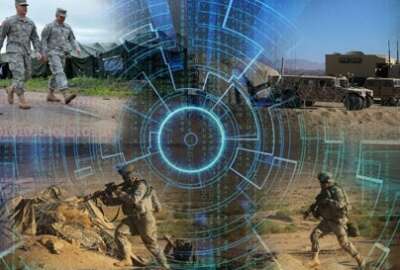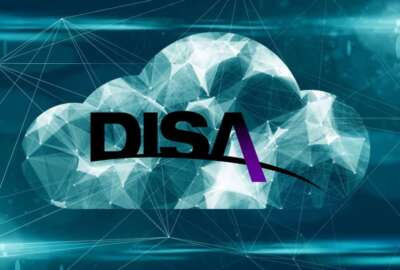
DISA beginning to look at policy changes for DEOS ahead of new RFI release
As industry continues to await one final RFP, DISA is examining policy changes that will help it implement its DEOS contract.
Best listening experience is on Chrome, Firefox or Safari. Subscribe to Federal Drive’s daily audio interviews on Apple Podcasts or PodcastOne.
The Defense Information Systems Agency released a new request for information for its Defense Enterprise Operations Solutions (DEOS) contract on Oct. 25. DISA is also moving the contract to the General Services Administration’s IT schedule 70, suggesting DISA has a clearer picture of what it wants the final project to look like.
Brian Hermann, DISA’s enterprise-wide division chief, has some predictions for how the project will turn out.
“DEOS has to remain non-developmental, and focused on actual existing commercial offerings,” Hermann said at an Oct. 24 FedInsider event. “And we in the Department of Defense have to be willing to change our processes to use those off-the-shelf tools and leverage those commercially available services.”
For example, he said one major policy change that will need to happen in order to implement unified capabilities is that the department needs to change the way it tests new new commercial off-the-shelf tools. Right now, they’re tested for functionality. But functionality should be a given in commercial products.
Instead, DoD should test these products for cybersecurity concerns, and see how they work on DoD networks. And DoD should anticipate upgrading and improving its networks when adopting new capabilities, Hermann said.
But he also warned DoD can’t get too caught up in unique requirements, to the point that no commercial products will fit the bill.
“I’ll tell you I’m a little disturbed, if you’ve seen any of the documentation associated with DEOS that’s been publicly released, there was an 81 page functional requirements document,” Hermann said. “Doesn’t that sound a little bit contradictory to the idea of leveraging commercially available tools? It’s the department not quite being able to really give up on the idea that the functionality exists — we know it exists, we know it exists in multiple places — but what we need to think about is how we operationalize it?”
And that means thinking instead about the business practices, cybersecurity, and information access rules that will be placed around the tools in question.
DISA seeking single communication platform
In DEOS, DISA is looking for a single platform that can support every type of communication — not just email, but a full office suite, online meeting and collaboration tools, content management software, and eventually, an IP-based replacement for DoD’s secure voice and video teleconferencing systems.
The idea is that the formats will be interchangeable. Say, for example, someone leaves you a voicemail. You could access that voicemail as an email, or a text instead.
And it’s being handled under a single contract award for interoperability reasons, so that personnel from across the department can effectively collaborate with one another. So far, DoD has had more success at at the organizational level than at the enterprise level.
“Locally or organizationally controlled infrastructure tends to better support the capabilities that are fielded out there right now,” Hermann said. “If you’re in control of both the service that you provide for collaboration and able to make sure that the infrastructure supports that service, you’re better off.”
This leads to lots of very effective local directories that facilitate communication within organizations, but makes it difficult to reach out to other areas of the department.
But Hermann wants to change that, and DoD is already starting to move in that direction. For example, it’s currently using an enterprise level directory service for email and collaboration. But that’s not the same as one unified directory. Instead, each of the agencies and organizations are using a feed from that service. And sometimes that comes with complications.
For example, Hermann said the Navy has had difficulties configuring its network to use tools that aren’t a part of its Navy/Marine Corps Intranet.
Hermann wants to take the next step, and consolidate tools, which will eliminate some barriers to collaboration, and also help to eliminate duplicative spending. Otherwise industry has an incentive to work with every partner it can find within DoD, and the result is a lot of different ideas being implemented all at once that don’t necessarily work together.
And he’s starting to see that happen in certain capabilities, he said. For example, DISA maintains 5,000 appliances worldwide as part of its Global Video Services, which allows video conferencing. Virtualization is helping to smooth over some of the subtler differences among the various commercial offerings.
“Some of the appliance-based services that our capabilities have traditionally been built upon are evolving,” Hermann said. “They’re evolving toward software as a service, or other types of virtualization, and I think that’s a tremendously good thing.”
Copyright © 2025 Federal News Network. All rights reserved. This website is not intended for users located within the European Economic Area.
Daisy Thornton is Federal News Network’s digital managing editor. In addition to her editing responsibilities, she covers federal management, workforce and technology issues. She is also the commentary editor; email her your letters to the editor and pitches for contributed bylines.
Follow @dthorntonWFED
Related Stories

DISA is ready for commercial unified capabilities, but only at the right price




